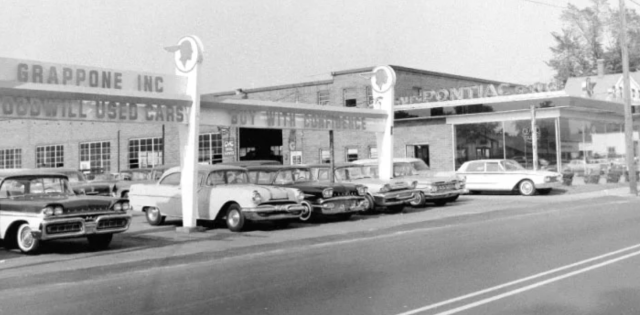In today’s challenging retail automotive market – with low inventory due to chip shortages – and a strong trend of consumer demand for new vehicles, it’s easy for dealers to focus on what they don’t have. A better strategy embraces both the “here-and-now” and the future. For the here-and-now, dealers would be well advised to focus on – and make the most of – the inventory they do have, so as to prevent losing customers to other dealers. For the future (and for dealers faced with shoppers determined to get exactly what they want), dealers should encourage shoppers to order and wait for their new vehicle.
Urban Science recently executed two surveys, one with the Harris Poll taken among consumers,1 and one executed independently among dealers.2 The results underscore the danger of making assumptions about what new-vehicle shoppers want and need to motivate a purchase or lease.
For dealers to make the most of the inventory they do have, they need to clearly understand:
- How and when to motivate consumers to consider alternative vehicle choices
- How long shoppers are willing to wait for their next vehicle
Two-Thirds of New-Vehicle Shoppers are in Market Now
According to the studies, dealers believe that well over half of new-vehicle shoppers (58%) are willing to wait for their vehicle. In contrast, less than a third of consumers (28%) actually say they will order and wait if their vehicle of choice isn’t available in two to three months.
The perception that consumers will wait could result in an even-more unsettling outcome for dealers who fail to realize the depth of their misalignment between what they believe and what consumers are saying: 42% of new-vehicle shoppers say they would consider a different dealership, and 22% would consider a different dealership for the same brand, while 14% would go even further and consider a different brand. In other words, the competition.
Given the circumstances, it’s imperative that dealers create and implement strategies proven to influence shopping behavior and promote positive customer experiences. One of those strategies is incentives.
Don’t Overlook the Power of Incentives to Motivate Shoppers to Consider Alternatives
Incentives are a tried-and-true strategy for motivating behavioral change. This carries over to a large purchase like a new vehicle. What’s more, incentives need not be big to motivate behavior. And they are relevant to all kinds of buyers. According to a recent study commissioned by Urban Science,3 gift-card incentives worked nearly as well for those making between $50,000-$74,500 (40%), as those with HHI over $124,999 (43%).4
In fact, the Urban Science Harris Poll mentioned earlier found that 6 in 10 consumers said incentives would be influential in getting them to change their vehicle purchase or lease decision. It also identifies the four areas that consumers reported that incentive would be likely to influence: 1) encouraging a new purchase for those who planned to buy used; 2) enticing them to consider a Certified Pre-Owned vehicle (if they originally intended to buy new); 3) shifting them to a larger vehicle of the same brand; or 4) encouraging them to a higher trim level for the same model.
The Bottom Line – Make Sure “Nobody Walks”
While only 26% of dealers say2 they would use incentives to encourage consumers to consider a different trim level, 77% of consumers say1 incentives would motivate them to consider a higher trim level. There is clearly a missed opportunity for dealers who don’t use incentives to motivate shoppers.
Incentives (even small ones) can be a secret weapon in facing today’s inventory shortage. The solution echoes the strategy mentioned earlier:
- Motivate customers to purchase from the alternative choices you do have in inventory
- When you have a shopper in your showroom, do everything you can to ensure they don’t walk – as the survey mentioned earlier clearly indicates, incentives can be effective in motivating shoppers to go up in trim level, consider a larger vehicle, or move from new to CPO.
- Help shoppers bridge from “buy now” to an “order & wait” mindset
- Helping, within this competitive environment, may also mean using incentives to motivate consumers to order a vehicle and wait for delivery.
By implementing these strategies, dealers can demonstrate their willingness to serve as true sales consultants, and help ensure a positive customer experience while gaining (or keeping) a customer who might otherwise have gone elsewhere.
The Objective Power of Science.
If you’d like to talk to someone at Urban Science about getting your dealership aligned with new-vehicle-shoppers’ demands, call or email me, Rick Twydell, Urban Science Solution Lead at rgtwydell@urbanscience.com or 313.262.3039. And let us show you how we can apply the power of science to your challenges.
1 Urban Science Online Consumer Study, June 2021. This survey was conducted by The Harris Poll on behalf of Urban Science among 2,067 U.S. adults age 18 and older.
2 Urban Science Online Dealer Study, June 2021. This survey was conducted by Urban Science among 93 U.S. dealers
3 Urban Science AutoHook direct to dealer performance, June 2020 – June 2021
4 Urban Science Customer Survey, This survey was conducted January-March 2021; 168 total responses from consumers that have gone through the AutoHook gift card redemption process at an AutoHook subscribing dealer









